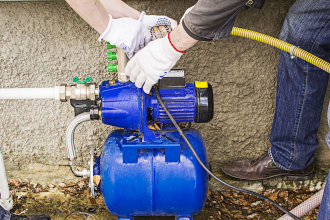Installing a new air conditioner involves selecting the suitable unit, proper sizing, and professional installation to ensure efficiency. Key steps include assessing home cooling needs, choosing an energy-efficient model, and ensuring proper placement. Professional installation guarantees optimal performance, lower energy costs, and prolonged system lifespan.
- Introduction to Air Conditioner Installation
- Choosing the Right Air Conditioner
- Preparing for Installation
- Site Inspection
- Installing the Mounting Bracket
- Drilling and Securing
- Setting Up the Air Conditioner
- Connecting the Electrical Components
- Testing the Air Conditioner
- Final Steps and Maintenance Tips
- Conclusion
Introduction to Air Conditioner Installation
Setting up a new air conditioner may seem intimidating, but breaking down the process into small steps can make it easier. This manual will help you navigate the difficulties of installing an air conditioner, whether replacing an old unit or installing one for the first time in your home. If you need help determining where to begin, seeking advice from air conditioning installers can provide a solid starting point.
With the correct information, the installation process can be straightforward and hassle-free. This guide aims to provide a clear, concise walkthrough to help you install your new air conditioner quickly and efficiently, allowing you to enjoy a relaxed, comfortable home environment in no time.
Choosing the Right Air Conditioner
The first step in the installation process is selecting the appropriate air conditioner for your needs. This entails considering several variables, including your budget, the size of your home, the local temperature, and energy efficiency ratings. Choosing a suitable unit is crucial because an undersized unit will overwork and wear out quickly. Simultaneously, a considerable unit will turn on and off too often, wasting money and energy. For an in-depth understanding of selecting the perfect unit, check out this Energy Saver guide on air conditioning. This resource provides detailed insights on what to look for when purchasing an air conditioner, including SEER (Seasonal Energy Efficiency Ratio) ratings, which measure the efficiency of cooling systems.
Preparing for Installation
Before starting the installation, gathering all the necessary tools and materials is critical. This ensures a smoother process without unnecessary interruptions. You’ll need the new AC unit, a supporting bracket, screws, a screwdriver, a level, and possibly a drill and wall anchors, depending on your wall type. Additionally, read the manufacturer’s instructions carefully to understand any specific requirements for your particular unit. Proper preparation helps identify potential issues before they arise, making the installation process much more manageable.
Site Inspection
- Examine the space where the air conditioner will be installed. Ensure it has sufficient structural support and is free from obstructions that might block airflow.
- Ensure there is adequate clearance for airflow. A well-ventilated area enhances the unit’s efficiency by allowing proper air circulation.
- Check if the electrical outlet is nearby and in good condition. This step ensures the unit can be powered without needing extensive electrical alterations.
Installing the Mounting Bracket
After completing the preparatory steps, the installation begins with securing the mounting bracket to the wall. The mounting bracket holds the weight of the air conditioner, so it must be installed correctly. Once the bracket is horizontal, mark the locations where holes should be drilled using a level. Precision in this step is crucial for the stability of the air conditioner. An improperly mounted bracket can lead to the unit being unbalanced, causing noise and operational inefficiency.
Drilling and Securing
- Drill holes on the marked spots: This step requires precision to ensure the holes are straight and properly aligned.
- Insert wall anchors if necessary: Wall anchors provide additional support, especially in drywall installations, preventing the screws from becoming loose over time.
- Secure the bracket with screws: Ensure the screws are tight enough to hold the bracket firmly against the wall, but be careful not to overtighten, which could damage the wall or the bracket.
Setting Up the Air Conditioner
With the mounting bracket securely, you can now position the air conditioner. Carefully lift the unit and set it into the bracket. This step might require extra hands, as air conditioners can be heavy. Make sure the unit is securely fitted into the bracket. Most units will have additional screws or clips that further secure the air conditioner to the bracket. Properly securing the unit helps prevent any potential accidents and ensures the equipment operates efficiently.
Connecting the Electrical Components
Once the unit is securely in place, connect the electrical components. This might involve hardwiring the unit directly or simply plugging it into an appropriate outlet. Always follow the manufacturer’s instructions for this step. If you are not comfortable or experienced with electrical work, hiring a professional electrician is advisable to avoid any safety hazards. Ensuring proper electrical connections guarantees safety and contributes to the air conditioner’s optimal performance.
Testing the Air Conditioner
After all the connections are made, it’s time to put your new air conditioner to the test. Switch on the unit and check for proper operation. Ensure that it cools effectively and that no unusual noises or vibrations exist. Running a few preliminary cycles can help identify any installation issues early on. According to Consumer Reports, initial testing can reveal issues such as inadequate cooling, strange noises, or improper cycling, which might indicate problems with the installation or the unit itself. Addressing these issues promptly ensures efficient operation and longevity of your air conditioner.
Final Steps and Maintenance Tips
Maintaining your air conditioner is crucial for its long-term performance.
Routine maintenance involves cleaning or replacing the air filters since they can accumulate dust and dirt, ultimately impacting the system’s efficiency. Furthermore, ensure no debris or leaves obstruct the outdoor unit’s ventilation. Scheduling annual professional maintenance can help detect and address potential problems before they become serious. Regular upkeep extends the lifespan of your air conditioner and ensures that it operates at peak efficiency, saving you money on energy bills.
Conclusion
Installing an air conditioner may seem complex, but it can be a manageable project with careful preparation and attention to detail. These steps will ensure your new air conditioner is set up correctly and ready to keep you cool during the hottest days. Always remember to seek professional advice if in doubt. Installing your air conditioner correctly guarantees optimal performance and longevity, making your home a comfortable haven even in the heat of summer.














